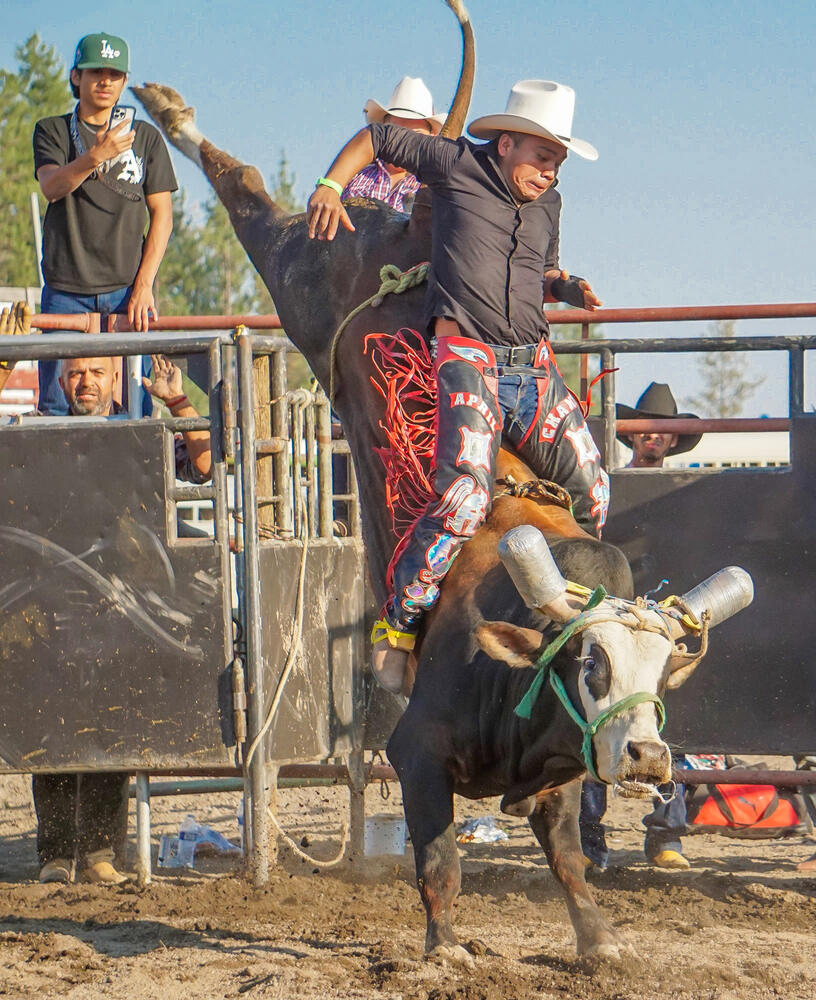Jaripeo

In the heartlands of Mexico, amidst the dust of rural landscapes, there exists a tradition that embodies the spirit of courage, skill, and community: Jaripeo. Rooted in the rich tapestry of Mexican culture, Jaripeo is more than just a rodeo; it’s a mesmerizing spectacle that showcases the unbreakable bond between humans and animals, the thrill of the chase, and the celebration of heritage.
Jaripeo traces its origins back to pre-Hispanic times when indigenous communities engaged in rituals honoring their gods through feats of bravery and skill with animals. Over centuries, these rituals evolved into organized events, blending indigenous customs with Spanish horsemanship brought during the colonial period. Today, Jaripeo stands as a testament to the resilience of Mexican culture, preserving age-old traditions while adapting to the modern world.
At the heart of Jaripeo lies the pulse-pounding dance between man and beast. Bulls, renowned for their strength and ferocity, take center stage as skilled riders mount them, aiming to stay on for as long as possible. The adrenaline rush is palpable as the bull bucks and twists, testing the rider’s balance and determination. Each second is a battle of wills, a testament to human grit in the face of nature’s raw power.
But Jaripeo is not solely about the spectacle of bull riding; it is a multifaceted event that encompasses various competitions and cultural elements. Charreadas, or Mexican rodeos, showcase the precision and finesse of charros and escaramuzas as they demonstrate their prowess in horseback riding and traditional ranch activities. From roping and steer wrestling to elegant displays of horsemanship, charreadas offer a glimpse into Mexico’s equestrian heritage.
Beyond the competitions, Jaripeo is a vibrant celebration of community and tradition. Families and friends gather to enjoy live music, savory cuisine, and folkloric dances, creating an atmosphere of camaraderie and festivity. It is a time-honored tradition where generations come together to honor their shared heritage, passing down stories and skills from one age to the next.
However, amidst the spectacle and revelry, Jaripeo also sparks debates regarding animal welfare and safety. Critics argue that the practice of bull riding and other rodeo events subjects animals to unnecessary stress and harm. Proponents, on the other hand, assert that these traditions are deeply ingrained in Mexican culture and that efforts are made to ensure the welfare of the animals involved.
As Jaripeo continues to evolve, organizers and participants are increasingly conscious of these concerns, implementing safety protocols and promoting responsible animal handling practices. Furthermore, initiatives aimed at educating the public about the cultural significance of Jaripeo seek to foster greater understanding and appreciation for this time-honored tradition.
Conclusions
Jaripeo is more than just a rodeo; it is a living expression of Mexico’s cultural identity, resilience, and reverence for the natural world. It embodies the spirit of adventure and camaraderie, uniting communities in celebration of their shared heritage. As the dust settles and the echoes of hooves fade into the distance, Jaripeo stands as a testament to the enduring legacy of Mexican culture, a spectacle that continues to captivate hearts and minds around the world.





